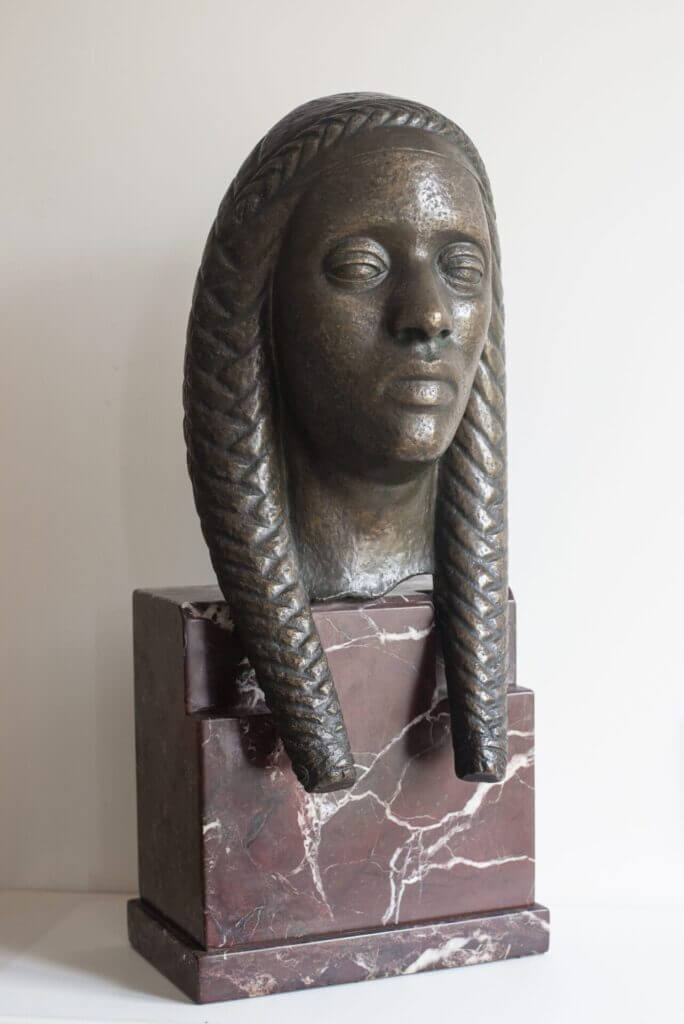Your currently viewing RAW Modern | Switch to RAW Contemporary
Femmes aux nattes, 1925
Catalogue essay by Blanche Llewellyn.
Céline Lepage, born in 1882 in Warsaw, was a French sculptor. Her education, career trajectory and personal history remain elusive, mirroring the mystery surrounding her artworks, as little is known or has been studied.
From 1905 onwards, Lepage exhibited her works at the Salon of the Société Nationale des Beaux-Arts in Paris to great acclaim. In his book, Sculpture of today (1921) the art historian William Kineton Parkes placed Lepage among “The number of women sculptors who belong to the modern school”. Upon her return to Paris, she exhibited four sculptures at the Salon d’Automne in 1919 and then at the Salon des Tuileries in 1923. These exhibitions afforded her the opportunity to participate in decorating the Pavillon de Pomone, the art workshops of Le Bon Marché under the direction of Paul Follot. In an article in the Chronique des Arts et de la Curiosité of the Beaux Arts ( 29 May 1934), it was noted, “The doors she executed for the pavilion of ‘Le Bon Marché’ at the 1925 Exposition des Arts Décoratifs were highly remarked upon. However, this success was not enough to satisfy a temperament like that of Céline Lepage, who aimed much higher and considered that in sculpture, “the more one advances, the more one progresses, and the more the work becomes difficult.”
Married to an officer, she traveled abroad from 1909 to 1912, particularly to Tunisia and Morocco, countries that inspired her later creations.
The monuments encountered during her travels, with their numerous reminiscences of Egyptian art, were a revelation for the artist. Like Lepage’s most famous work, “Woman in Marrakech” (1921) , described by the Journal des débats politiques et littéraires (1922) as “une sculpture orientaliste”,‘Femmes aux nattes’ was probably conceived on her return from her international travels. While Lepage portrays the woman with dignity, her features, including large lips, flattened nose and plaited hair, responds to the West’s perception of Arabic women through the lens of 19th and 20th-century Orientalism.
